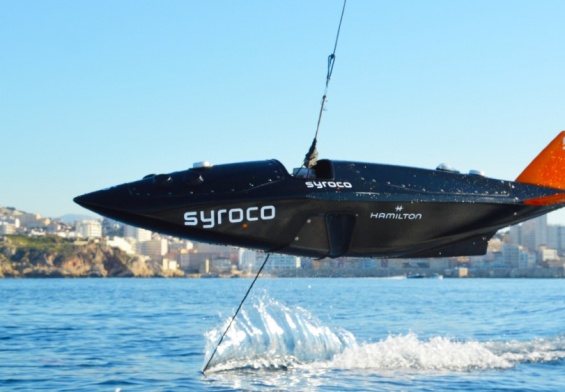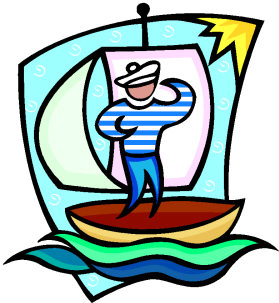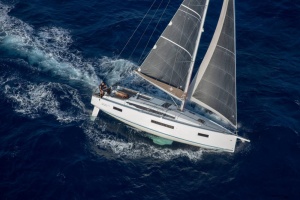
The term “sailboat” includes many different sizes, shapes, and hull types. Here’s how to identify most of the common ones.
By Carol CroninMay 10, 2021
Sailboats are powered by sails using the force of the wind. They are also referred to as sailing dinghies, boats, and yachts, depending on their size. Sailboats range in size, from lightweight dinghies like the Optimist dinghy (7’9″) all the way up to mega yachts over 200 feet long. The length is often abbreviated as LOA (length overall), which differentiates that dimension from LWL (length on the waterline). Especially on older style boats, these two lengths can be quite different.

The Jeanneau 64 is a modern sailboat that gives you endless possibilities for exploration.
SAILBOAT TYPES
There are many different types of boats for sailing, differentiated by three distinctive characteristics:
-
- Hull Type (monohull, catamaran or trimaran)
-
- Keel Type (fin keel, wing keel, bilge keel, daggerboard, or centerboard)
-
- Mast Configuration and Sails (sloop, fractional rig sloop, ketch, schooner, yawl, cutter, cat)
Let’s explore those different types in a little more detail.
HULL TYPE
The hull is the main part of a sailboat, which is usually made of fiberglass, metal, or wood. Hull type describes the number of hulls.
-
- Monohull – one hull
-
- Catamaran – two hulls
-
- Trimaran – three hulls
While monohull sailboats are more traditional and far more common, there are many performance advantages to catamaran and trimaran sailboats, including faster speeds and more stability. A monohull relies on ballast for stability. Catamarans and trimarans gain stability from the distance between their multiple hulls.

KEEL TYPE
All sailboats have one or more lateral surfaces, known as keels. The primary purpose of a sailboat keel is to counter the sideways force of the wind and generate forward motion by creating lift. A secondary purpose of most types of keel is to provide ballast; the more ballast, the more stable (and heavy) the boat is. There are several different shapes of sailboat keels, and each has a different name—as well as different pros and cons.
Full-length keel 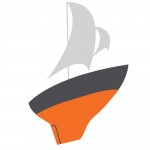
Often found on traditional sailboats, the full-length keel uses length rather than depth to provide adequate lift and ballast for the hull. The rudder is often attached to the aft end.
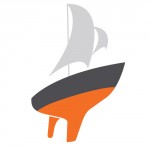 Fin keel
Fin keel
A fin keel is separate from the rudder, and generally deeper and shorter in length in relation to the overall length of the hull.
Wing or bulb keel
Adding two wings or a single bulb to the very bottom of a keel allows designers to improve righting moment without adding too much weight. The wings poke out sideways from the main keel at its tip. Although winged keels are generally found on high performance sailboats, they can also help reduce the draft on cruising boats, which improves access to shallow or shoal water. The aim of a bulb keel is to set the ballast as low as possible, to help gain the maximum possible amount of leverage, without increasing keel depth (which is called “draft”) too much.
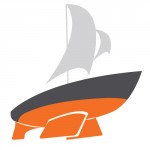
Bilge keel
Sailboats with bilge keels are able to stand upright on sand or mud at low tide. They are very common in areas with large tidal ranges. Bilge keels are not as effective as central keels in reducing sideways slippage (also known as “leeway”).
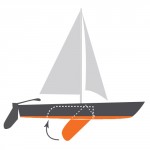
Centerboard or Daggerboard
Centerboards and daggerboards are able to be raised and lowered by the crew. When raised, they reduce both draft and wetted surface. When lowered, they provide many of the same benefits as a keel, though in smaller boats they are often unballasted. A centerboard is attached to the boat by a pin that creates a pivot point for lifting. A daggerboard drops into a slot through the boat. They are common on sailing dinghies, as well as on high-performance catamarans and trimarans.
MAST CONFIGURATION AND SAILS
Mast configurations and sail combinations are another way of categorizing sailboats. These are just a few of the most common types.
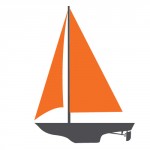 Sloop
Sloop
The most common type of sailboat is a sloop. A sloop has one mast and two sails, a mainsail and a headsail. Depending on the size and shape of the headsail, it may be called a jib, genoa or spinnaker. The headsail is hoisted to the top of the mast on the forestay, a supporting cable that runs from the top of the mast to the bow of the sailboat.
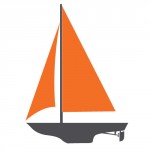 Fractional Rig Sloop
Fractional Rig Sloop
The forestay on a fractional rig sloop doesn’t reach the top of the mast; it connects at a lower point. There are performance advantages to this setup, since a fractional rig allows the crew to bend the top of the mast and flatten the sails on a windy day when full power is not needed. Popular in the 60s and 70s, fractional rigged sloops are starting to become popular again, particularly for high-performance race boats where the mast is able to bend more easily.
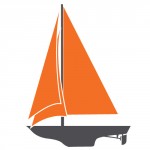
Cutter
A cutter also has a single mast and mainsail, but the mast is farther aft to allow room for two headsails from two forestays. The headstay carries the jib and the inner stay carries the staysail. This is often a favorite rig for cruising sailing boats because it offers an easily managed range of sail combinations for different wind strengths.
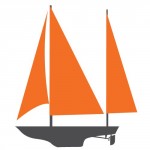 Ketch
Ketch
A ketch has a second, shorter mast behind the mainmast, but forward of the rudder post. The second mast is called the mizzen mast.
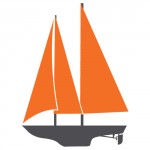 Schooner
Schooner
A schooner’s aft mast is taller than its forward mast. Schooners may have up to six masts, though most only have two.
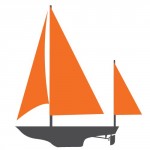
Yawl
A yawl is similar to a ketch with a mizzen mast shorter than the main mast. The difference is that the mizzen mast on a yawl is carried behind the rudder post, so the mizzen sail is smaller.
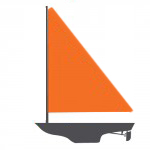
Cat
A cat rig has only one sail, and the mast is located well forward. This is a popular rig on smaller boats, which are known as “catboats.”
For more about how to choose a keel and rig, read Keel Myths and Rig Choices.
DIFFERENT USES OF SAILBOATS
The use of sails on boats can be traced back to Ancient Egypt, when the Egyptians added sails to their reed boats to sail upstream against the River Nile’s current. Sailboats were used to develop international trade routes, though this form of propulsion has since been replaced by less wind-dependent power methods.
Today, sailboats are almost exclusively used for recreation. Cruising and racing are popular pastimes, with many different options available in each case.
Sailboat racing is a weekday evening and weekend seasonal pastime for many around the world, on a variety of boats—from small dinghies like the Optimist all the way up to racer/cruisers. There are also professional sailboat racing teams who take part in races that vary in length—from daytime “around the buoys” racing, to singlehanded and crewed teams who race around the world, sometimes without stopping.
Cruising in sailboats is also enjoyed in many different ways, on a variety of sailboats and types of water (lakes, rivers, canals, coastal waters, and oceans), for different lengths of time. While most sailors are content to daysail or cruise to a weekend destination, others buy a sailboat to fulfill that lifelong dream of sailing off into the sunset.
Buying a Sailboat
The thought of buying a sailboat is exciting, but it can also be a little daunting if you haven’t owned a sailboat before. There are a few things to consider before taking the plunge into sailboat ownership. You might also want to read How to Buy a Boat: Tips for a First Time Buyer.
How much can you afford to spend?
The cost of owning a sailboat extends beyond the purchase price, so it’s worthwhile doing your homework. Expenses to consider include, but are not limited to, insurance premiums, mooring/dock fees, education, regular annual maintenance, upgrades, and ad hoc repairs.
If you plan to race your sailboat, event organizers insist on third party liability insurance. If your sailboat is too big to live on a trailer, you’ll need a marina slip or a mooring—which in some areas can be very expensive.
If you are new to sailing, any training courses to learn boat handling and how to use safety equipment and the communication systems need to be factored into your cost estimate. And each year, your sailboat and its rigging should be fully inspected and any wear and tear should be repaired. If there is an engine, it should be serviced on a regular basis.
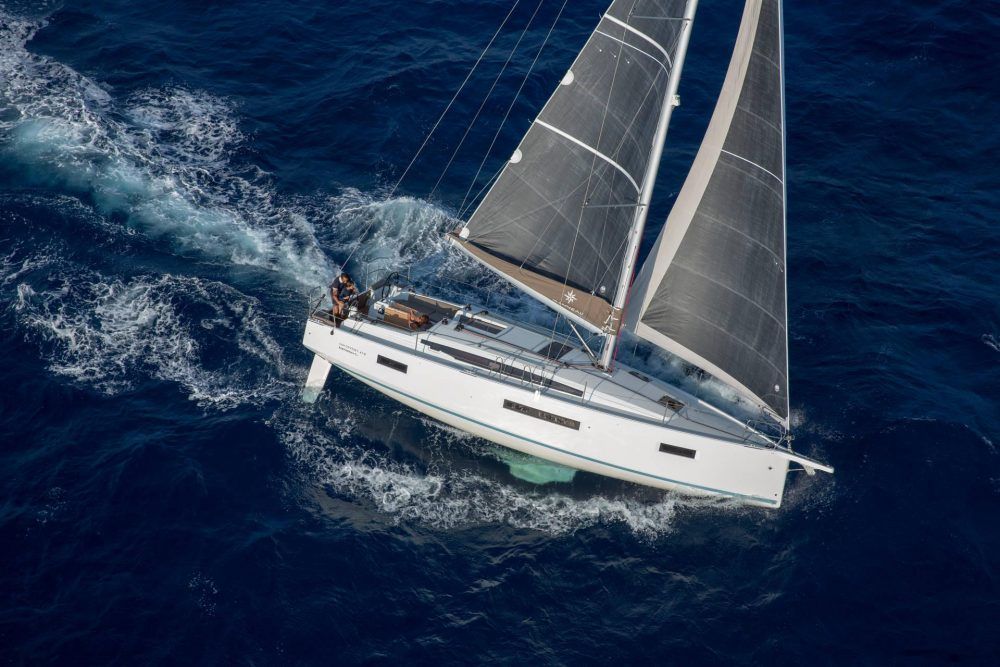
Sailboats can require a lot of maintenance, so ongoing costs must be factored in when looking at ownership expense.
BUYING NEW SAILBOAT VS. A USED SAILBOAT
New – Pros & Cons
If you know exactly what you want in a sailboat, buying new could be the best route for you. You will be able to specify the finish of your boat and choose from a list of optional extras. New boats are normally sold with a manufacturer warranty, so should you have any problems with your boat they can be resolved at no extra cost to you. However, like a new car, a sailboat will depreciate in value over the first few years.
Used – Pros & Cons
If budget is a critical factor when choosing your sailboat, a used boat may be a wise decision. A five year old model could save you 50% of the cost of a new boat. A larger boat is possible for a lower purchase price when buying used. However, you may have to spend money adding the features and equipment that you need. Used boats rarely come with a warranty, so make sure that any boat you consider purchasing has a full marine survey to check its condition and maintenance.
For more, be sure to browse all our sailboat listings on boats.com.
Editor’s Note: This article was originally published in June 2015 and last updated in May 2021.
source:
https://www.boats.com/on-the-water/sailing-101-sailboat-types-rigs-and-definitions/





